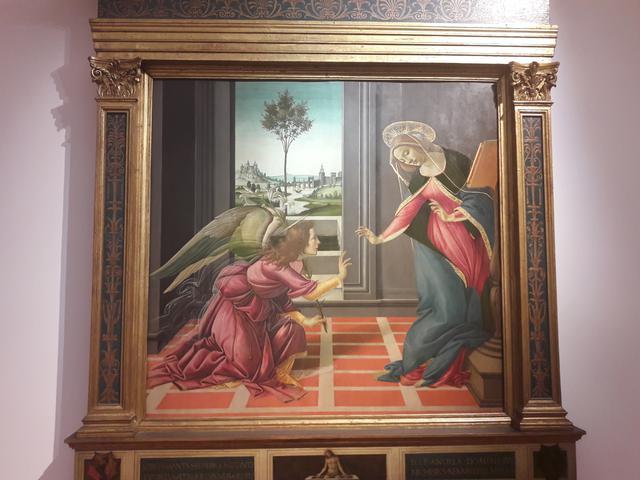Annunciation

Sandro Botticelli, in his long career as a painter, has created countless tempera paintings on board, and some of them have become very popular: among the most important we can remember Pallas and the Centaur and the Calumny, two works that summarize the style by Sandro Botticelli.
This botticelli advertisement was commissioned by Benedetto di Ser Francesco Guardi, a money changer, who had a family chapel in the church of the Cestello monastery in Pinti.
Approximately fifty years after the completion of this proclamation, this work is always in the same church, except for the fact that the structure was passed to the nuns of Santa Maria Maddalena de' Pazzi.
In the 18th century, this framework proclamation was transferred to the chapel of Saint Martin of the villa in Fiesole di Terenzano. For a time there was no more news of this work, until, still in the same century, the work was found and definitively taken to the Uffizi Gallery.
The two protagonists are the Angel and the Virgin Mary, who are inside a bare room with a checkered floor, and in the background there is an opening outside, where you can see a part of the river landscape.
Botticelli represents the Angel who has just touched the ground after flight, as can be seen from the veil surrounding him, which is still in motion; Mary, on the other hand, looks away from the book she was reading to cross that of the Angel of the Annunciation.
Both characters are linked to each other, as well as by the aforementioned game of glances, also by movements (as can be seen from the outstretched arms of both protagonists).
The angel, in the hand that does not reach out towards Mary, has a white lily, a flower that symbolizes the purity of the Virgin.
This work, as well as other Botticelian works from the eighties of the 15th century, manifested the influence of Savonarola's criticism of the sinful Florentine society of those years.
The movements of the two protagonists are very theatrical, and this is also seen in the excessive movement of the protagonists' clothing, which is almost unreal.
The setting of this work is also very interesting: at the bottom there is the coat of arms of the Guardi family, a double inscription with evangelical words, and in the center a Pietà, with the protagonist Christ rising from the open sarcophagus.
© Tourblink